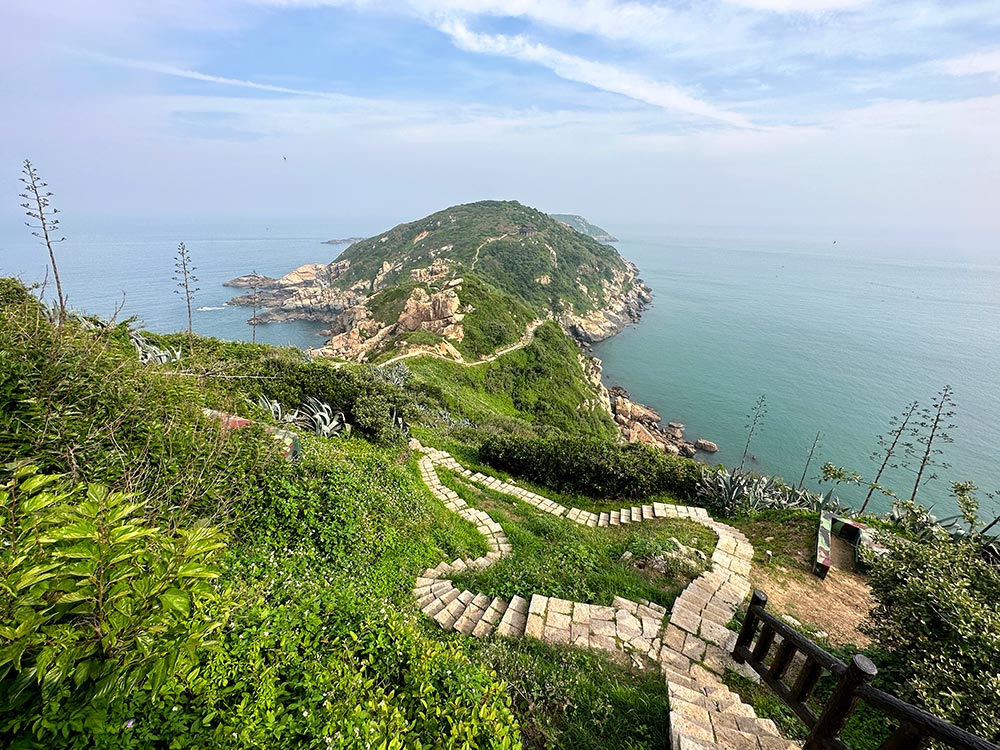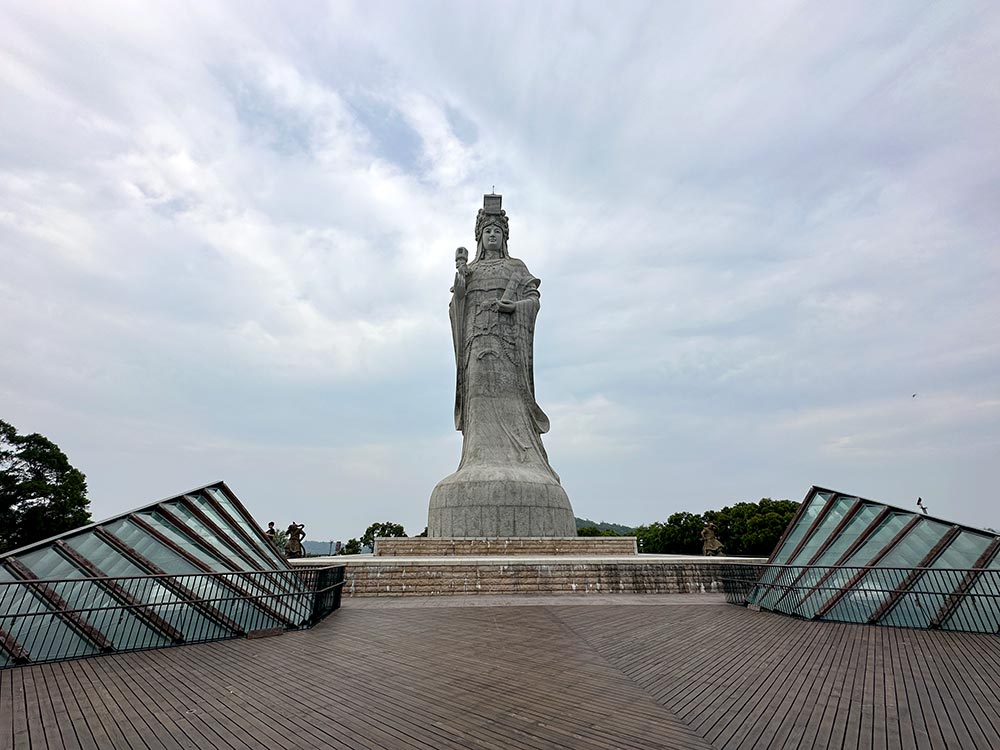Have you heard about the Blue Tears in Taiwan‘s Matsu Islands? The unearthly blue glow of the bioluminescence along the shoreline at night is one of the reasons that draw visitors every year and I was stoked to finally check it out for myself on this trip to the Matsu Islands 马祖. There are several ways to see the Blue Tears that I tried out, so if you’re planning your own Taiwan Matsu Islands trip soon, here’s my guide on how to see the Blue Tears.
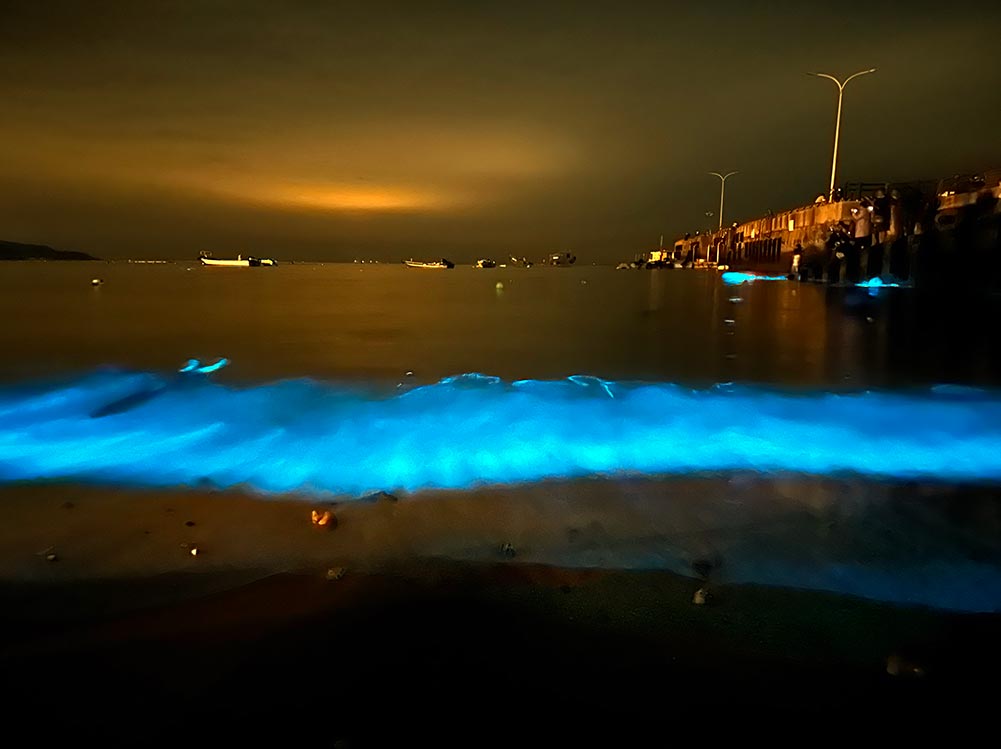
Photography note: I’m not a pro photographer – all the Blue Tears photos are taken on my Iphone 14 Pro camera, most with long exposure night mode and in some cases the help of a gimbal for stability. I did some minor edits to crop and brighten up some darker images, but I definitely didn’t add in any of the blue bits! You’ll probably get better photos with a proper DSLR, but also make sure to just look because seeing it with your own two eyes is a pretty incredible experience.
What are the Blue Tears 蓝眼泪?
Blue Tears or 蓝眼泪 Lan Yan Lei is the local name given to the glowing blue bioluminescence found in the seas around the Matsu Islands. Lately you can also find them around Kinmen Island – both these islands are closer to China than Taiwan geographically. This romantic sounding name is something that the Taiwanese came up with for tourism.
The Blue Tears are actually a type of microorganism in the water known as Noctiluca Scintillans. During the day it presents as a reddish rusty tint in the water – which is why in some places it’s called the Red Tide. The blue glow happens in the dark when the algae are agitated, usually by the waves or other movement in the water. This is actually a reaction by the algae to try and escape its predators.
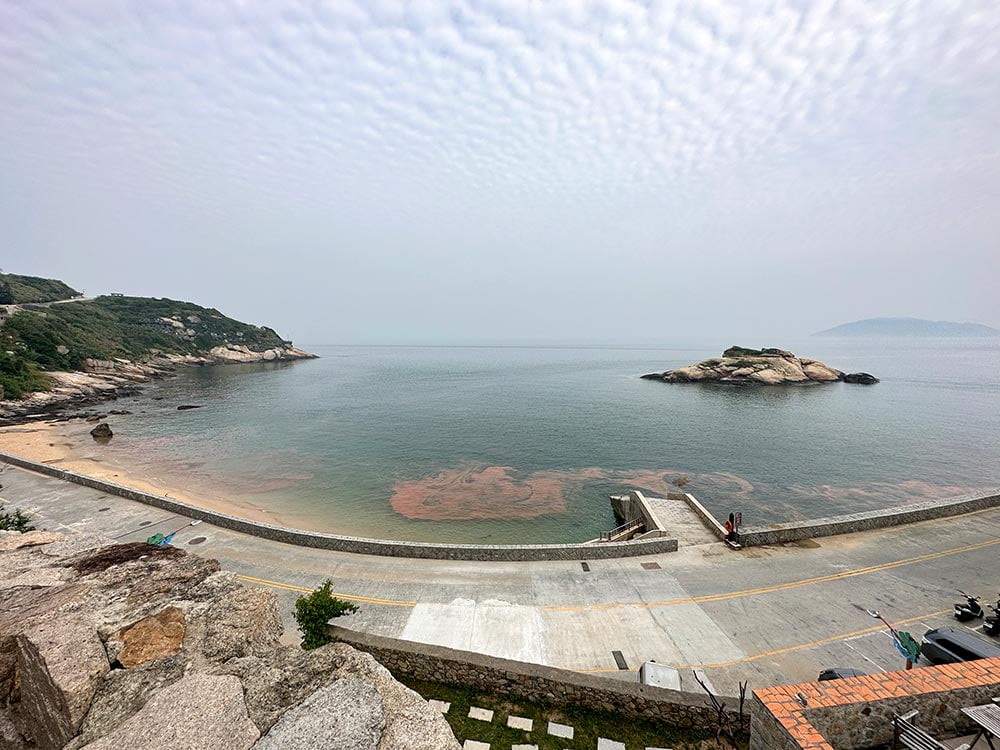
This phenomenon isn’t unique to the Matsu Islands – other places around the world like also see blue bioluminesence, but it really depends on luck. with Matsu, this is a relatively ‘stable’ occurrence that happens around the same time every year, which is how it came to be one of its tourist attractions.
Where are the Matsu Islands?
The Matsu Islands are offshore islands that belong to Taiwan, though geographically they’re actually closer to China than Taiwan! The Matsu Islands are made up of several main islands that can be visited:
- Nangan 南竿 and Beigan 北竿 are the main islands in the centre where the airports are located
- To the northeast is Dongyin 東引, northernmost point of Taiwan
- To the south are the islands of Juguang 莒光 – Dongju 東莒 and Xiju 西莒
How to get to Matsu Islands
Read my detailed post on how to travel to the Matsu Islands if you are planning a trip there.
By plane: You can fly to Nangan or Beigan airport from Taipei’s Songshan airport in about 1 hour. UNIair flies daily with 8 flights between Taipei and Nangan and 3 flights between Taipei and Beigan – Check out UNIair’s website. Mandarin Airlines has one flight between Songshan and Nangan – check out Mandarin Airline’s website.
By overnight ferry: If you have time, you could also take the overnight ferry Taima Star from Keelung in New Taipei City that goes to Dongyin and Nangan in about 10-11 hours. Buy Matsu Overnight Ferry tickets on KKday [affiliate link]
By fast ferry: A new fast ferry North-South Ferry takes just 3 hours to get from Taipei to Nangan. Buy Matsu Fast Ferry tickets on KKday [affiliate link]

When is the best time to see the Blue Tears in the Matsu Islands?
The typical season to see the Blue Tears in the Matsu Island is in the summer/autumn months from late April to October when the water is warmer, though you tend to see a higher concentration from April to June because the weather conditions are better for Blue Tears then.
What weather conditions are needed for the Blue Tears to show?
It needs to be as dark as possible, so if you’re looking at a calendar, try and pick a time when there is no moon. The bright full moon is your worst enemy here.
Weather conditions on the day also need to come together – cloud cover means less light and the wind direction needs to be right so the algae flow into the bays.
To be honest, it really is luck of the draw! Try to give yourself a bit more time here to improve your chances of having a good night. I visited the Matsu Islands in mid May when the moon was waning. Out of the 4 nights I was there, I had 1 ok sighting, 1 completely incredible day, 1 soso day and 1 day I really didn’t try at all.
There are some guaranteed ways to see the Blue Tears regardless though the glow level and your satisfaction will vary greatly, I’ll talk about it below:

4 ways to see the Blue Tears in Matsu Islands
Blue Tears boat ride in Beihai Tunnel, Nangan 南竿北海坑道
- Sighting rate: 100%
- Exertion rate: 100%
The Matsu Islands have lots of military structures all around from their history of warfare with neighbouring China. Some of these have been repurposed into tourist attractions, one of them is the Beihai Tunnel 北海坑道 on Nangan Island.
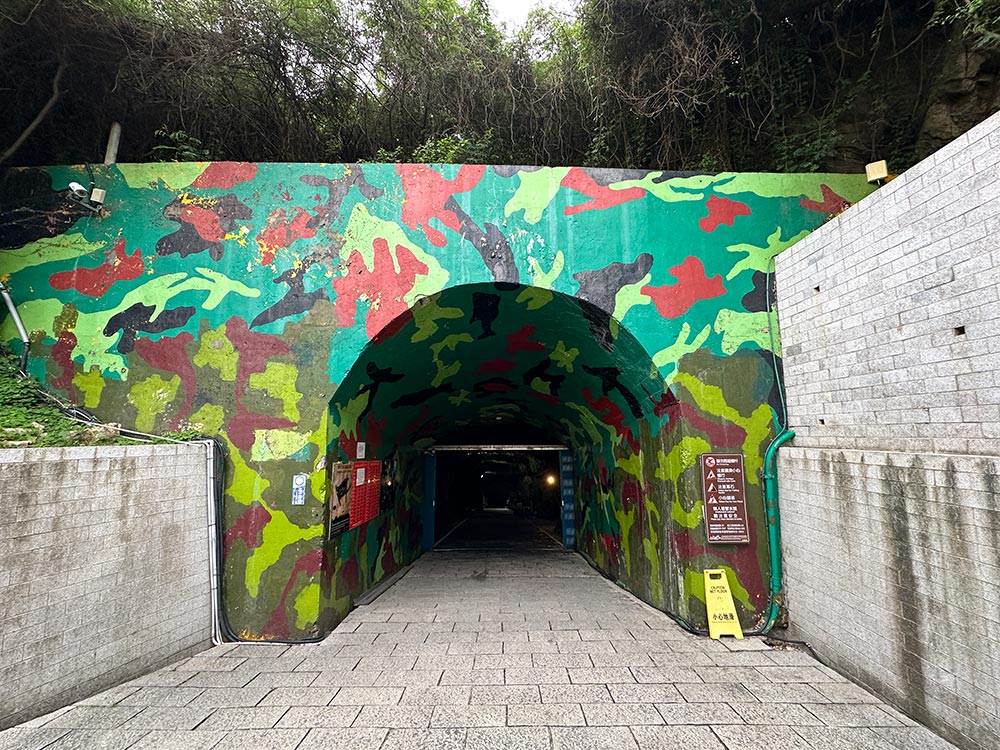
The Beihai Tunnel is a manmade tunnel that was painstakingly dug out of the rock on the Tieban Coast. It was used to house military boats, but now it’s a place you can walk in at low tide (check the tide times before you go). But the main reason people come here is for the Blue Tears boat ride that happens in the evenings.
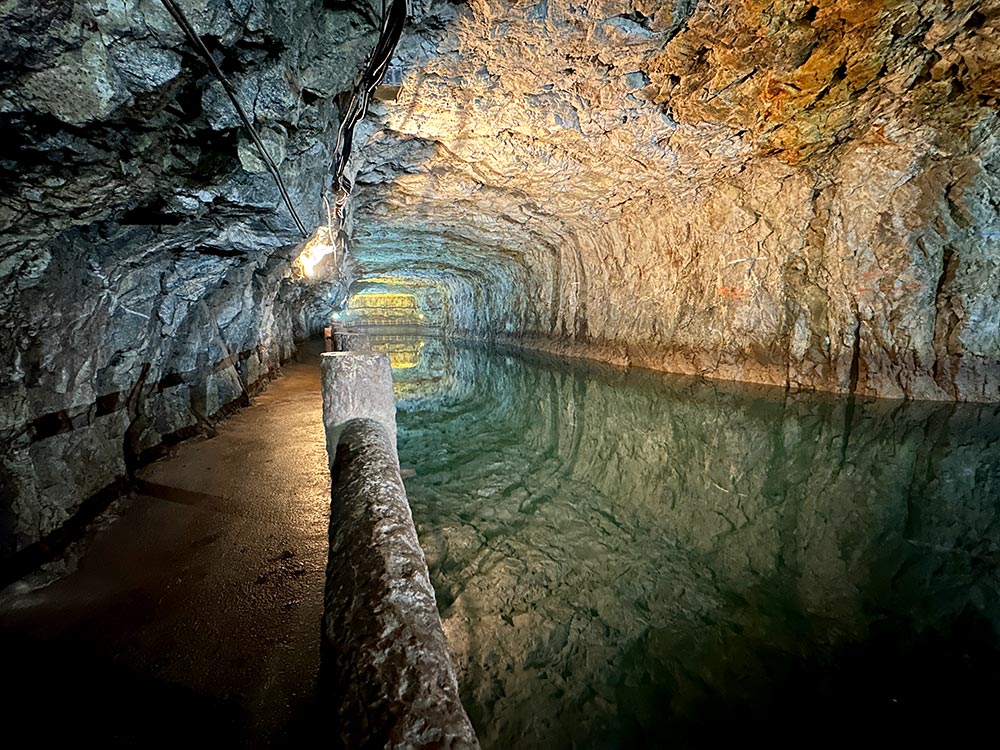
The Experience
The whole session takes about 30 minutes. Here’s what happens:
1. Briefing
The session starts off with a briefing to everyone by a guide about what exactly the blue tears are, from the scientific name to why they glow. The most important fact I learned is that the glow of the bioluminescence isn’t always blue – that’s important for later. The whole briefing is conducted in Chinese, so if you only speak English, you probably will want to have someone who can translate with you or just rely on looking at the pix that they show.
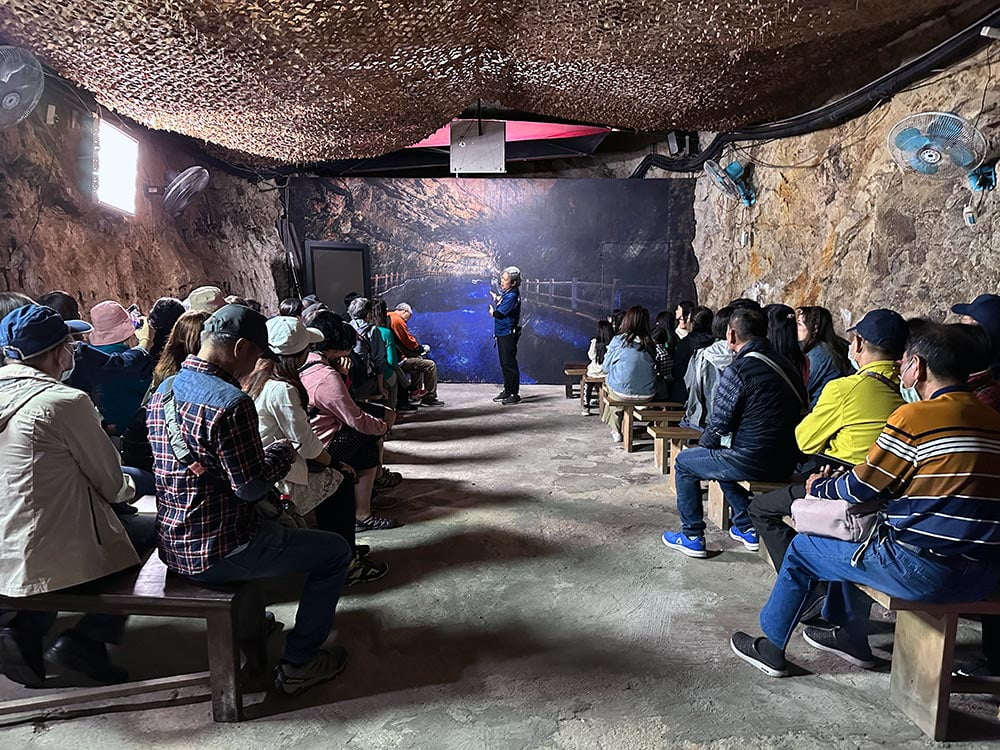
2. Boat time
After the briefing, life jackets are handed out and the people divvied up into boats and take a stroll over to the floating pontoon area.
Each boat can hold 12 people and the boat captain stands at the back of the boat to paddle and steer. There are 6 wooden seats on either side of the boat that you straddle, facing outwards. I personally don’t think it matters where you sit as there is no ‘best spot’, but they generally try to keep the weight even.
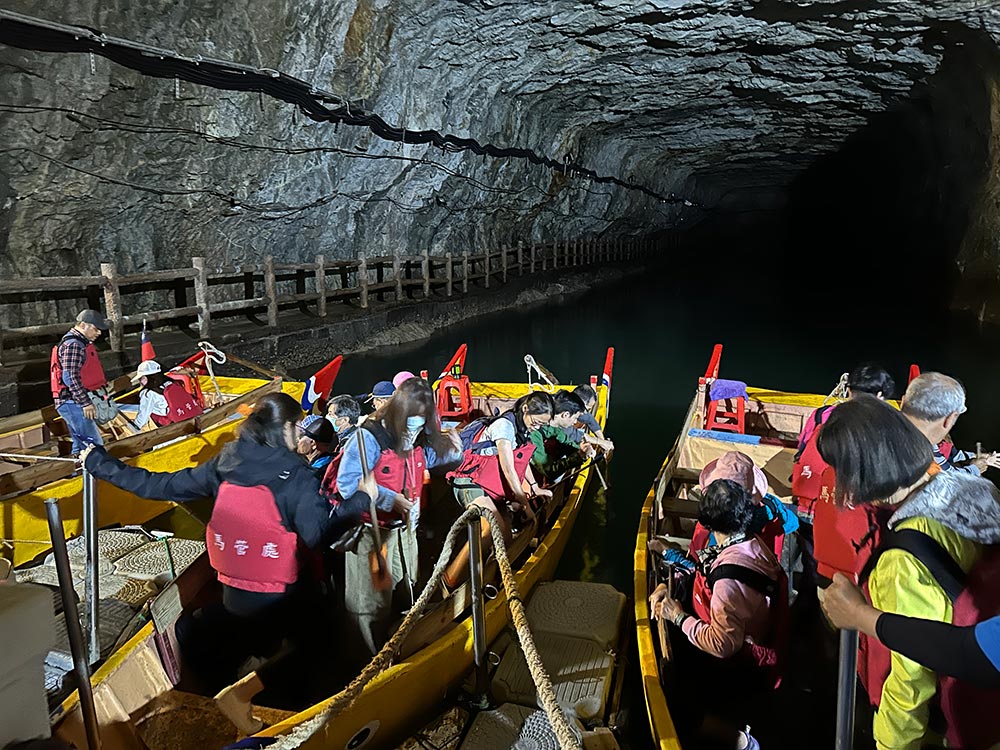
Each person is given a very important tool for this boat ride – a handmade scoop which is used to stir up the water. That agitation is what makes the blue tears glow. You will quickly love and hate this tool after about 5 minutes of using it.

The boats set off and slowly drifted down the tunnel. After all the boats left the dock, all the lights in the tunnel are turned off and it gets pitch dark. That’s your cue to start stirring up the water and see if it starts twinkling back at you.
This was my very first encounter with the Blue Tears and honestly even after the warning about it not being blue, the Blue Tears here wasn’t quite what I expected, especially after seeing all those online photos of glowing blue streaks in the water. What I saw were small specks of white fairy lights twinkling in the water which was cute, but not super wow.
The boat ride lasts about 20mins as it goes around the tunnel (which forms a square) to get back to the dock, which isn’t a long time, but trust me when I say 20 mins of stirring up the water does feel like forever. I thought it was a bit boring (and tiring) after a bit, so maybe take turns with your friends to stir up the water.
Photo opportunities: very low. Because the glow only lasts microseconds and I think there is a lot less algae in here compared to the ocean, it’s practically impossible to capture the Blue Tears glowing with a phone camera. Even video didn’t work here. Also the boat is moving so it’s hard to take a clear long exposure shot easily. Maybe those with pro cameras might manage it? But as our boat guide said, just put away your phone and enjoy the sight with your eyes…
Overall verdict
It’s a 100% guaranteed way to see the Blue Tears but it’s not a super impressive sight. It’s not a bad way to get a primer on what the Blue Tears are, but I suggest booking this tour at the end of your trip so you can potentially skip it if you have good sightings on other days. The Beihai tunnel is worth a walk around, so I’d recommend checking on low tide times and coming to visit then.
What’s nearby
Beihai Tunnel is located in the south of Nangan Island. Dahan Stronghold 大漢據點 is located on the other side of the bay. Nangan visitor centre 南竿遊客中心 is also located here if you need more info. Close by is Ren’ai Beach 仁愛沙灘 where I saw Blue Tears in the wild later that evening. Check out my Nangan guide for more.
Beihai Tunnel Boat Tour Booking details
Opening Hours: This activity happens in the months from March to November. The official time happens from 630pm-930pm, but they might increase timings during busy periods so check in with them. I went for a 530pm slot and they opened slots at 10pm to accommodate the crowd that weekend.
Each session lasts about 20-30 minutes. Be there 15-20 minutes before to register and get settled.
Cost: 350 NTD (about S$15)
How to book tickets:
- By KKday [affiliate link] – note that there is a normal boat ride from 9am-430pm that’s cheaper and does not involve seeing the blue tears, so make sure you pick the correct one
- By phone: (0836) 22177 – you’ll need to speak in Chinese
- By LINE ID: @gen6594n
- By email: [email protected]
- Appointment time: Monday to Saturday, 9 am to 4:30 pm
You need to book tickets beforehand especially on weekends when it can get crowded. I didn’t do enough prep beforehand so it was fully booked the weekend I was there when I called to check. You can also show up at Beihai Tunnel in the late afternoon about 5pm at Beihai Tunnel like I did and put yourself on the wait list – since I was just one person, I managed to bag a last minute slot!
More info on the Matsu Tourism Website. There’s a link to more info with some videos and photos, and I think you definitely need a pro camera cause it wasn’t glowing that intensely!
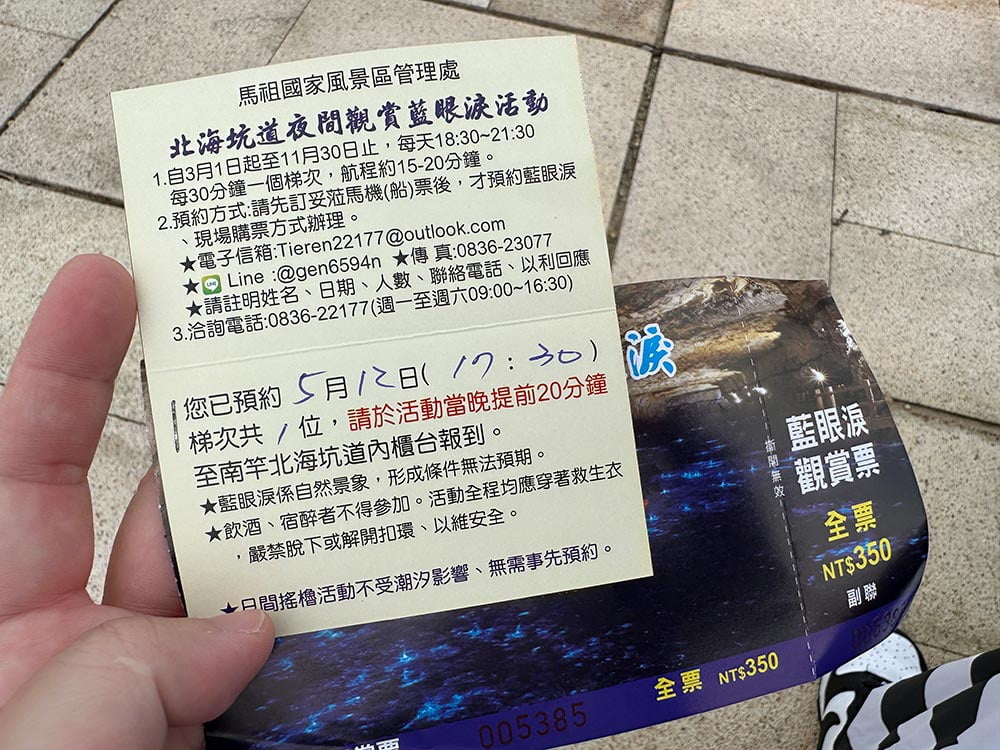
Blue Tears Experience Centre, Nangan 南竿藍眼淚生態館
- Sighting rate: 100%
- Difficulty rate: 1%
If you want a closer encounter with the Blue Tears that’s guaranteed throughout the year even during winter, head to the Blue Tears Experience Centre 藍眼淚生態館 (Also called the Blue Tears Museum) in the northwestern end of Nangan island.
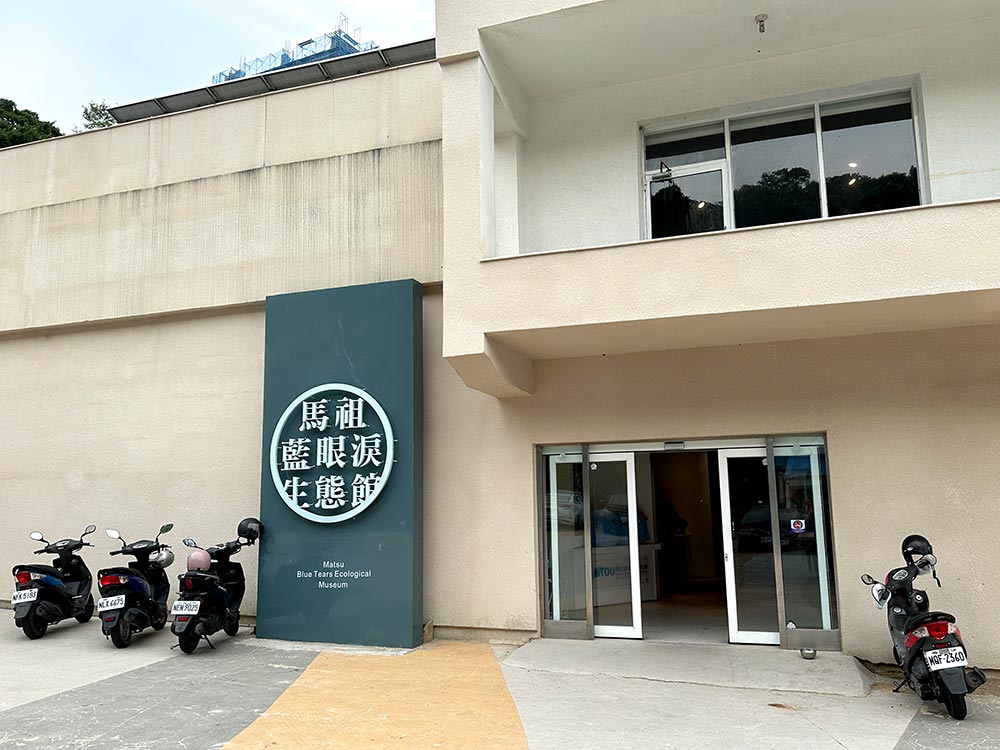
The Experience
The whole session again takes about 30 minutes. There are timed slots for this experience. I just turned up and managed to get tickets easily but in peak season you might want to plan a bit better than I did.
1. Video projection about the Blue Tears
First you watch an interactive video explanation of the blue tears. Visitors are seated on one side of a dark room and the video is projected on the walls and floor in front of you, with a cute mascot explaining what the blue tears are. After that, you have some time to take photos – the room projection is one of those motion sensor type things so as you walk across the floor, the water ‘ripples’, pretty cute for fun photos.
Again this all takes place in Chinese!

2. Blue tears time
After the video you are ushered into another room with lots of glass bowls filled with water. They’ve actually found a way to cultivate the algae outside of the ocean, so each of these bowls has some algae in it. The tool used to agitate them here is a plastic pipette like you get in science labs.
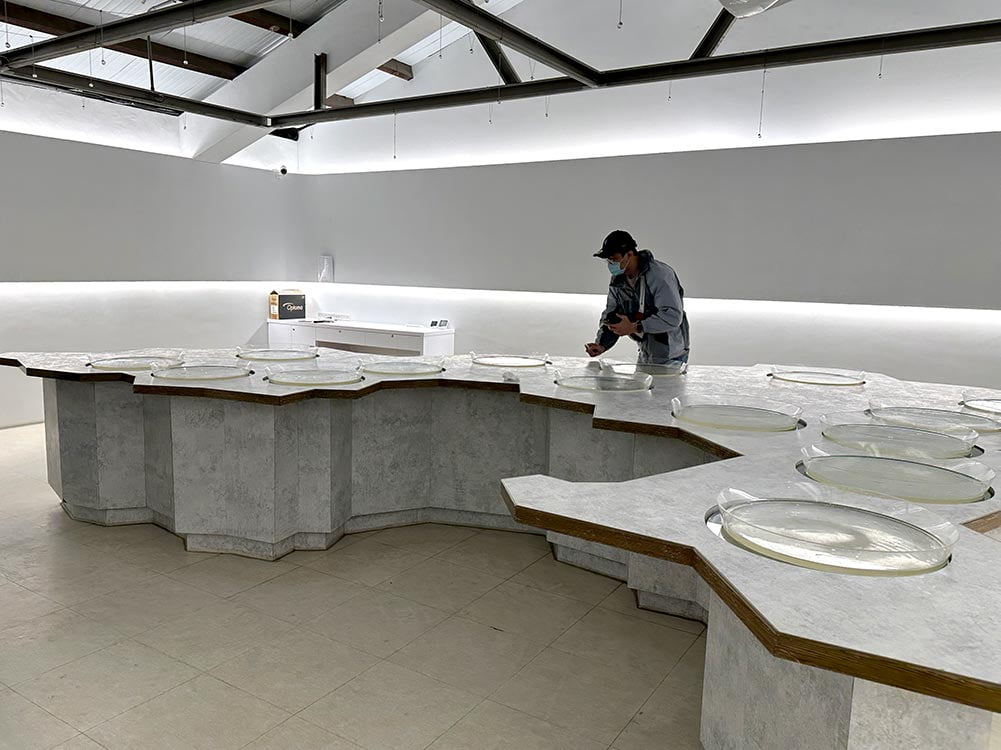
The lights are turned off and the room is cast into darkness. Audio instruction is given on the dos and don’ts, and how to make the blue tears glow with the use of the pipette by swirling, spurting and swiping through the water. The blue tears here did glow the blue I expected them to, and because it’s a controlled environment, you can appreciate them a little more up close.
There were extra bowls around, so after playing with one bowl, you can swap to another empty bowl to let the first one ‘recharge’ and regain its bright glow.
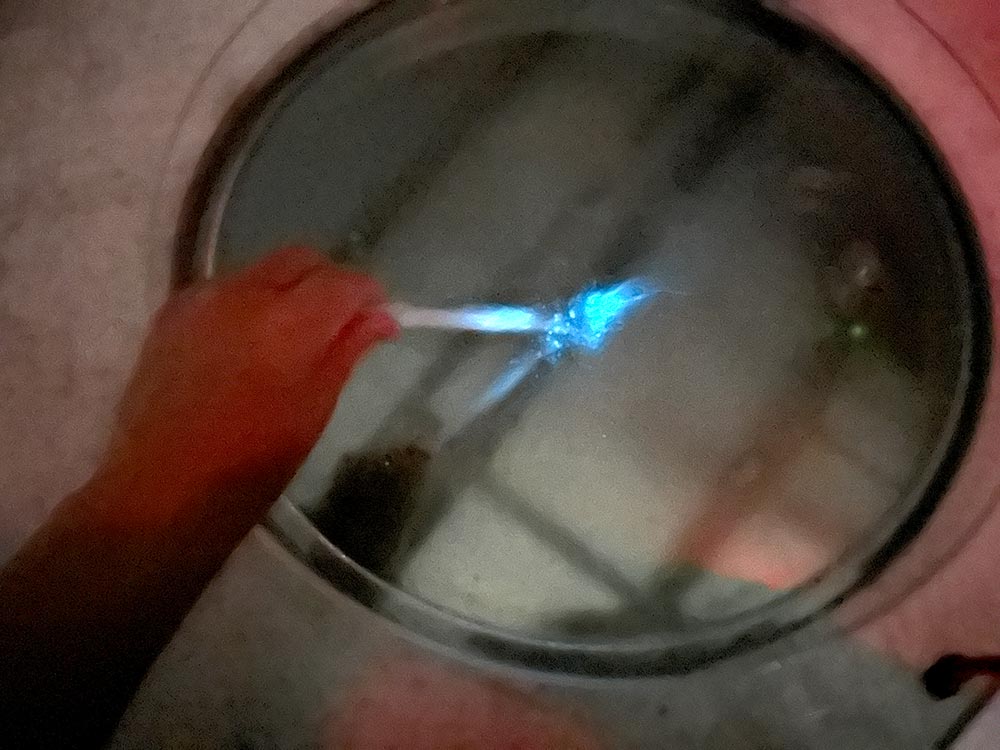
Photo opportunities: As you can see I actually managed to capture the blue tears on my phone even though the photo quality is pretty dire. Video was more effective as it was easier to capture and see the glowing blue tears compared to trying to snap a photo on my phone. Those with pro cameras might get better results.
3. Gallery + Cafe
The last section is a small gallery with some cool blue tears photos and a projected map showing blue tears locations and things to do in Matsu. There is a cafe and shop as well. I think there may be a package experience where participants get food and drink after the experience as I spotted some groups in the cafe with prepped meals.
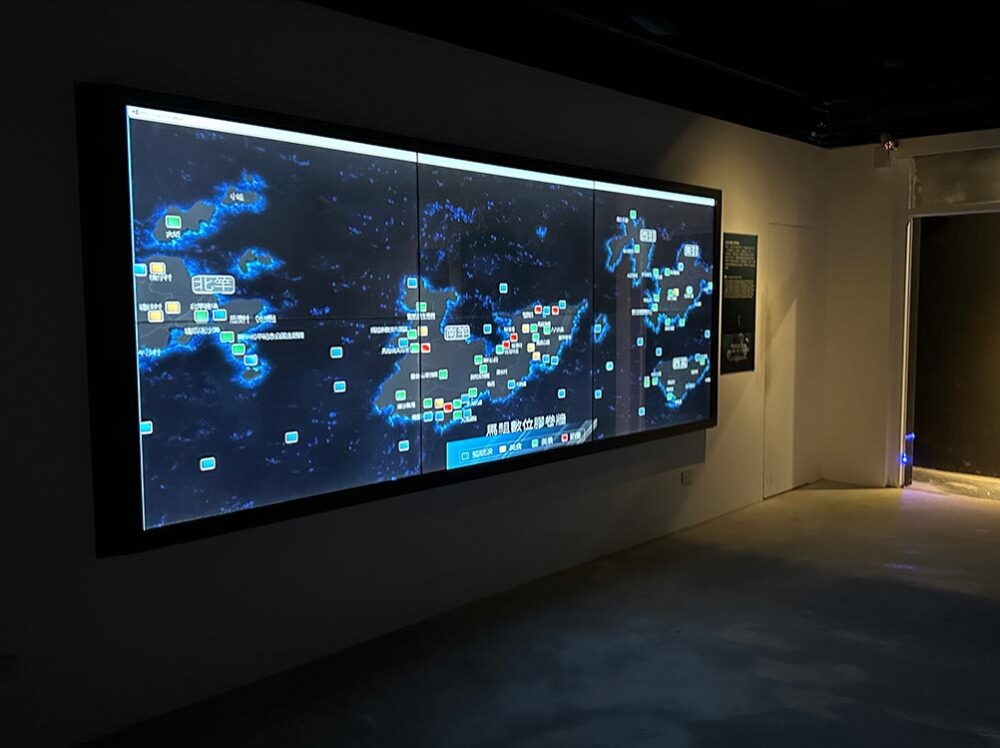

Overall Verdict
Fun guaranteed and low effort way to see the Blue Tears throughout the year. Though it’s less ‘organic’ since you’re playing with lab grown algae, but I would pick this over the Beihai Boat Ride just because it’s much less work.
What’s nearby
The museum is located right next to the beach, and there are some footpaths that you can use to track along the west coast of Nangan, or up to Furen’ao where there are nice views and a cute cafe called Furen Cafe but not much else unless you’re up for some exploration. Read more about things to do in Nangan.


Blue Tears Experience Centre booking Details
Opening Hours: Sessions every half hour from 10am to 5pm
Cost: 350 NTD (about S$15)
How to book tickets: You can book your Blue Tears Experience Centre Tickets via KKday [affiliate link].
I just turned up there and then to book and happened to arrive on the hour, so I walked in as the projection just started.
Blue Tears boat ride in Qiaozi, Beigan 蓝眼泪 夜航船 橋仔
- Sighting rate: depends
- Satisfaction rate: 1000% if you luck out like I did, 0% if luck is not on your side
The most satisfying way to see the Blue Tears is of course to see in naturally along the coastline, but you really have to have luck in your favour that day, and I did on Day 3 of my Matsu trip in Beigan.
I didn’t even know about this boat ride, but a group of Taiwanese travellers that I made friends with in Nangan told me about this blue tears boat tour that they were taking and I asked if there were vacancies and spontaneously decided to join them. I didn’t know it when I made my booking that afternoon, but that evening the blue tears were out in full force.

That night at Qiaozi port 橋仔港 which is where you take the boat from Beigan to Daqiu island, the blue tears were in full glow. Along the beach, people were splashing water and even jumping into the waves for a swim to really agitate them and get that blue glow. It was pretty incredible to see, and photos really don’t showcase what it’s like in person.
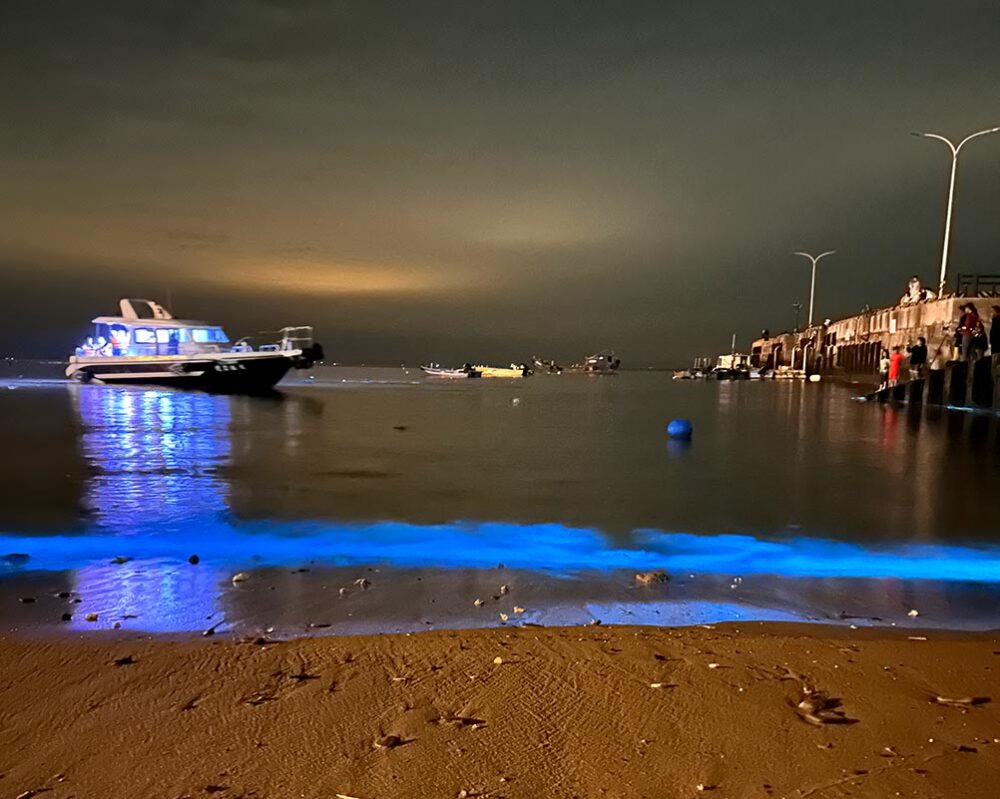
The Experience
We had to go early to the port and register our names on a list, and you had to bring along your ID/passport as there was a coast guard checking details. They would also count people getting on and off the boat, so perhaps they were worried about people sneaking in by the sea.
The boat guide said that the Blue Tears on that day was one of the brightest that he had seen for that season to date, so luckily I booked early because the boat tours were completely sold out that night. There were about 12 of us that boarded the boat, and even as the boat moved off you could see the wake was glowing!


The boat journey lasted about an hour. We basically went up and down along the western coast of Beigan and circled around the water, but it was really cool seeing the many different glow shapes that the boat movement stirred up along the way! It really felt like we were in a dreamworld. I took a lot of photos and videos at the start, but also took a lot of time to just enjoy the scenery and swoon a lot at the glow.
The boat stopped in the water at certain points to allow for better observation – near the islands, and even at a nice dark corner where our boatman pulled a big net through the water and it glowed like a spectre! When he poured water onto the boat deck with a bucket, it was like a glowing fountain let loose across the floorboard.
Photo Opportunities: Videos were much easier to take than photos on the moving boat, but I still managed some decent shots even with my iphone.
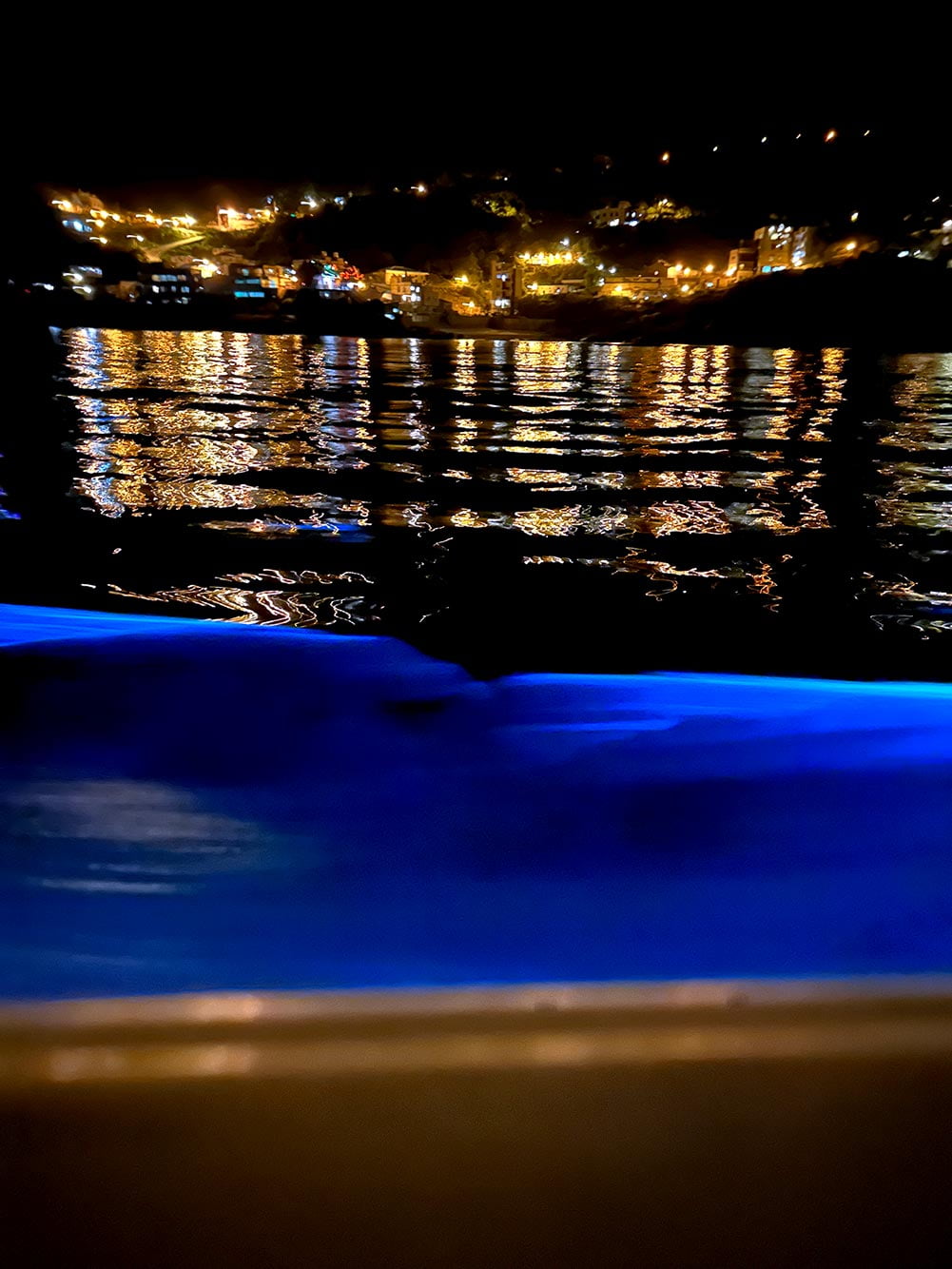
Overall verdict
BEST EXPERIENCE EVER. I’m probably biased because I had really good luck that night, but I think on a boat you have a better chance of actually following the flow of the algae. It’s also darker offshore and our boat man knew how to avoid the bright lights. It’s also kinda nice to just be out at sea at night.
What’s nearby
Qiaozi village is not far from the historic Qinbi Village 芹壁 where I stayed. This is where you take the boat to get to neighbouring Daqiu Island.
Blue Tears Boat Ride Booking Details
Location on Google Maps (I know it’s marked permanently closed, but that is the location!). Read my Beigan guide for more.
There are several boat companies that offer these Blue Tears night boat tours, the one I took was booked by my Taiwanese friends through the Guesthouse they stayed at.
My friends were staying at SO LOHAS B&B [booking.com affiliate link] and honestly it looks like a really nice place with a great rating and balconies facing the sea!
The boat company is Wei Sheng Hao 崴盛號 娛樂漁船 – see their Facebook (their video on 14th May was the day that I went out with them!) and Website. Contact 0981-373840 (Boat Captain) or 0970-779525 (Ms Lin).
Cost: 500 NTD (about S$22)
Other companies you can check out: Daqiu No. 2 大坵2號 0937-896835 (張良衛 Zhang Liang Wei)
Wild sightings of Blue Tears along the coast
- Sighting rate: depends on the weather
- Prayer rate: 200% for the conditions to come together
Most other times, blue tears hunting is basically something for you to do at night because there isn’t much else to do on the island after dark. Ideally you should have your own transport so you can easily explore or go to spots where sighting reports are good.
On my first night in Matsu, the Taiwanese group that I met in Nangan told me that they had spotted some Blue Tears in Ren’ai Beach 仁愛沙灘 (not far from Beihai Tunnel), so I headed over to check it out. There was no glow on the sand – the blue glow was only visible when sand was thrown in the water and it splashed up, so I only managed to get some videos but not photos.
I stayed in a village called Jinsha 津沙 in Nangan which also has its own beach and they do get Blue Tears sometimes, but alas, no sightings when I was there so maybe the currents weren’t right that day.
In Beigan besides the incredible sight at Qiaozi Village, I caught some glimpses of Blue Tears in Qinbi Village where I was staying. I did spend the following night cruising down to Mabiwan 馬鼻灣 near the airport as well where there were recent sightings, but no luck again. It really is so unpredictable, so having the sure-see options is a great backup in case the conditions just aren’t cooperating with you.
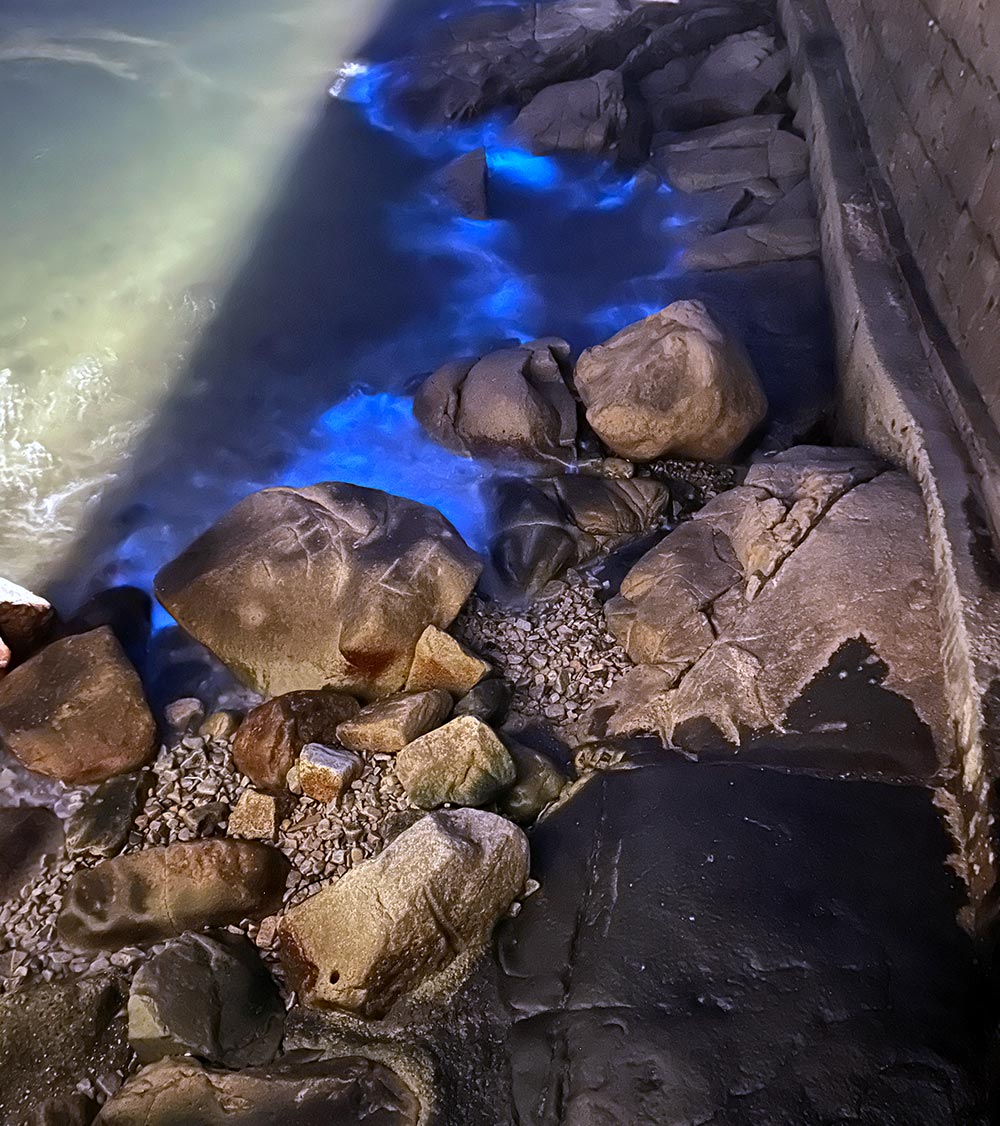


Matsu Blue Tears Hunting Tips
- Stay on the main highways as far as possible if driving on your own at night. Some of the small highways are not lit or paved, and Matsu’s roads in generally are pretty damn slopey. It’s hard enough driving during the day, so don’t take your chances at night.
- If you’re not keen to drive at night, stay in a guesthouse near a beach or the coast for the best chances of Blue Tears sightings at night.
- There are no 100% guaranteed sighting spots – there is a map with Blue Tears spots on Matsu Tourism Website, but your best bet is to chat with your guesthouse owner or local people in the area who will be able to give you tips.
I hope this helps anyone headed to the Matsu Islands to see the Blue Tears! Drop me any questions you might have in the comments and I’ll see if I can help.
Have you seen the Blue Tears in Matsu Islands or other places around the world? Share your experience here and check out my Matsu Islands planning guide or read my Matsu Island guides for Nangan and Beigan for more.

